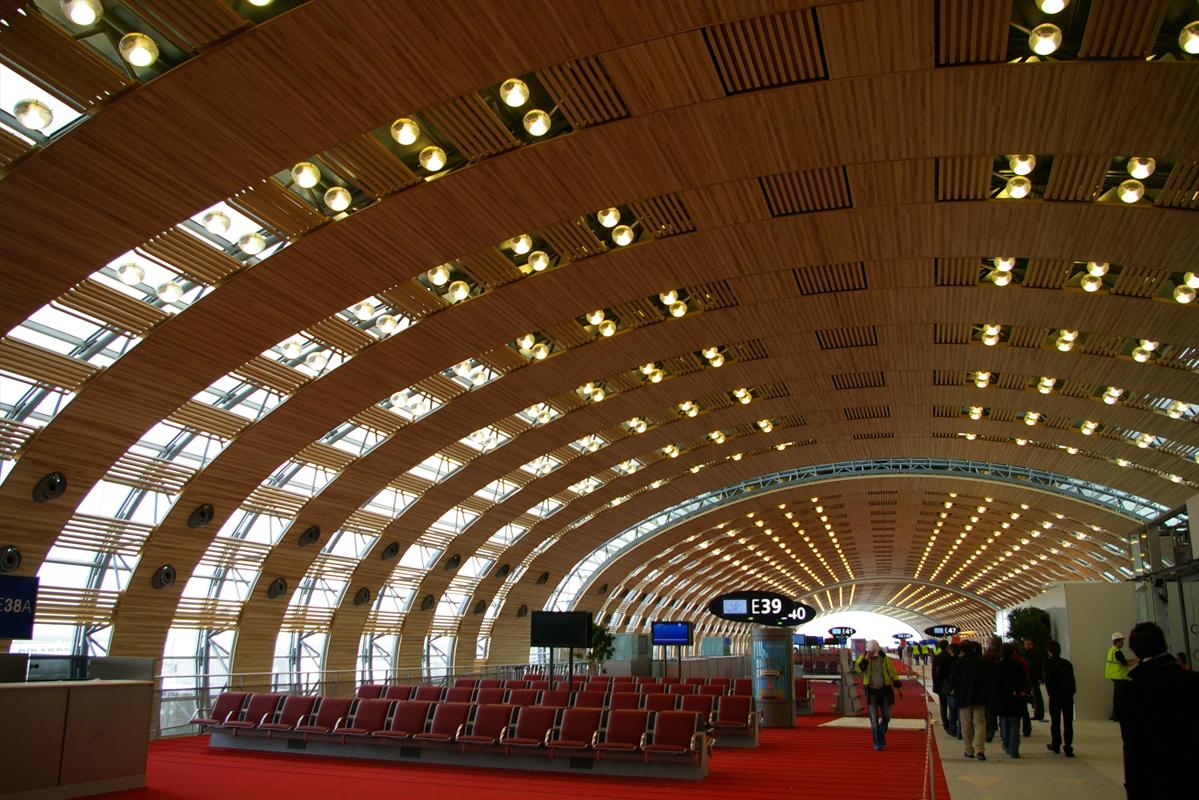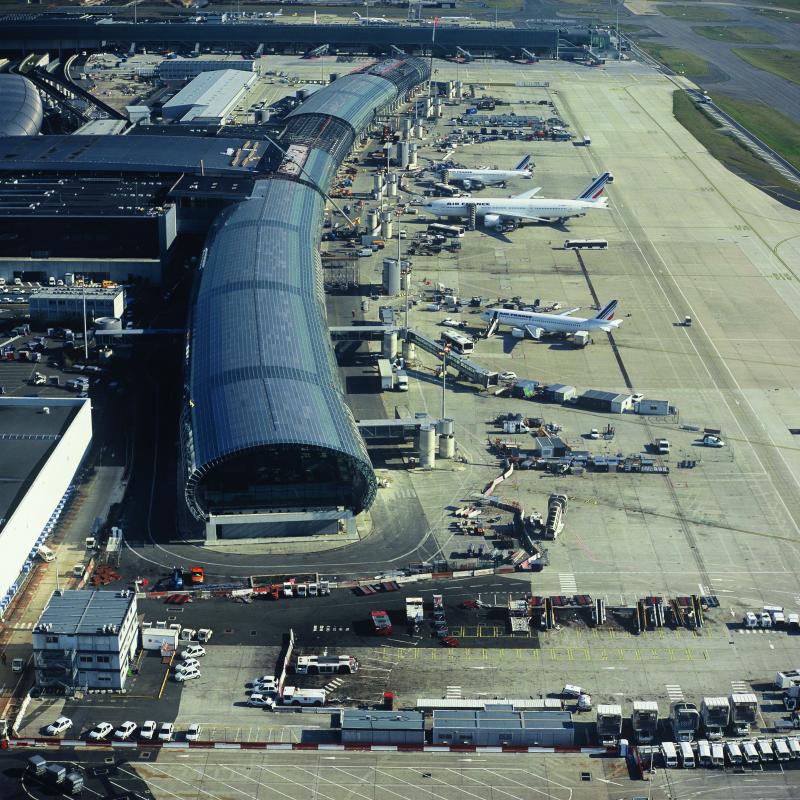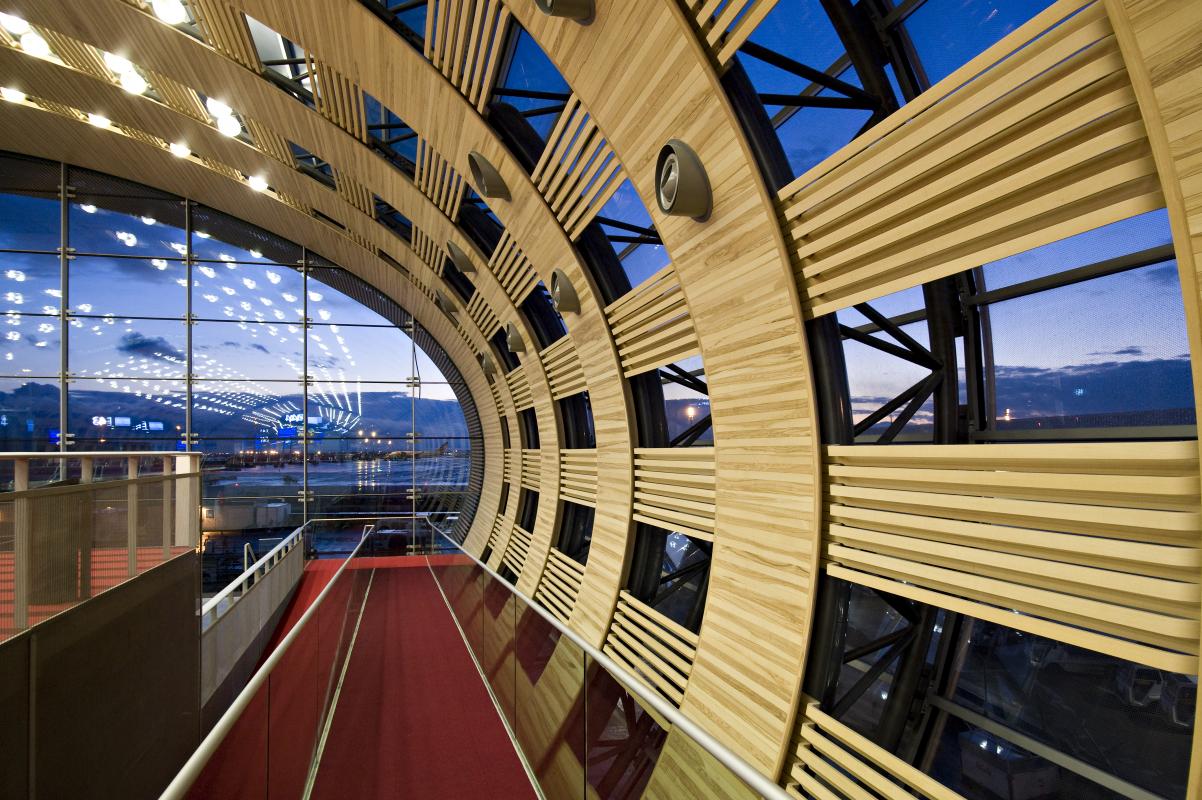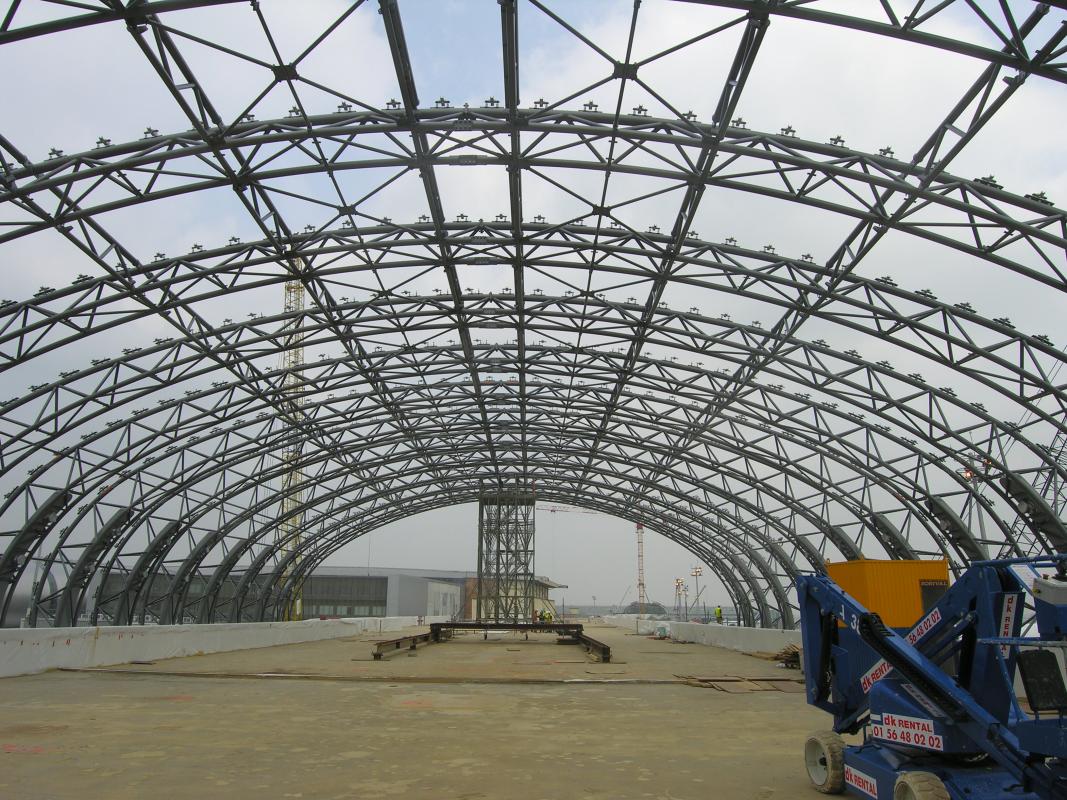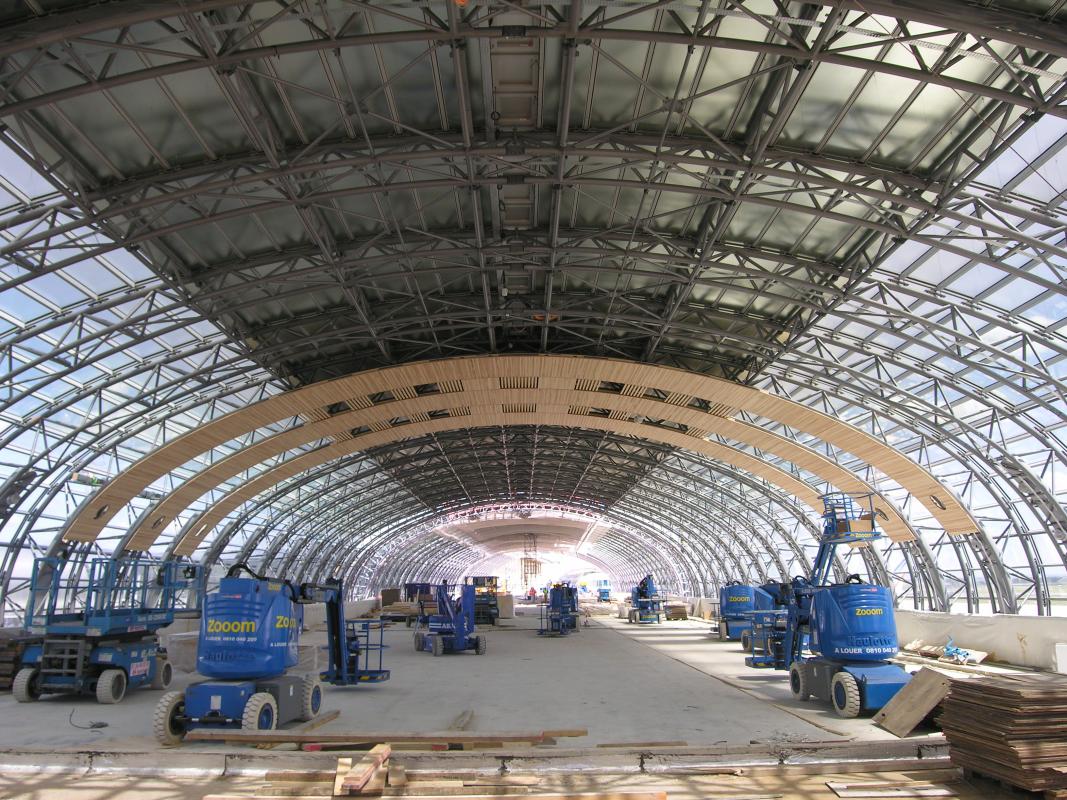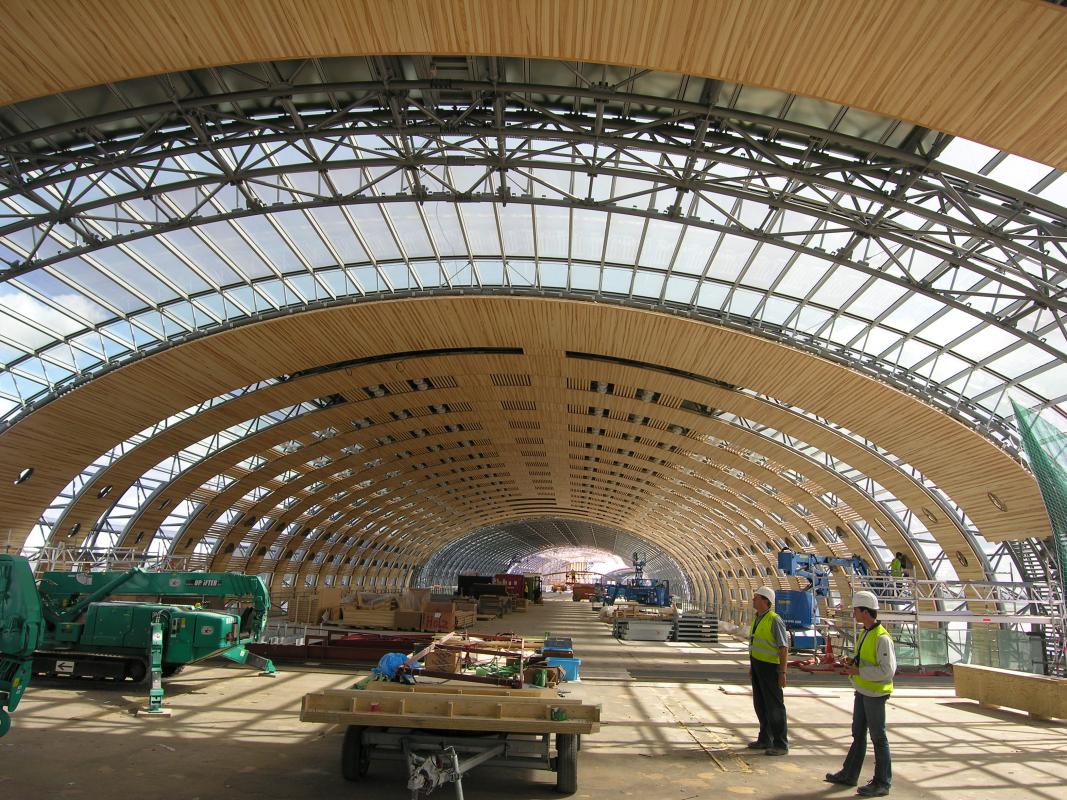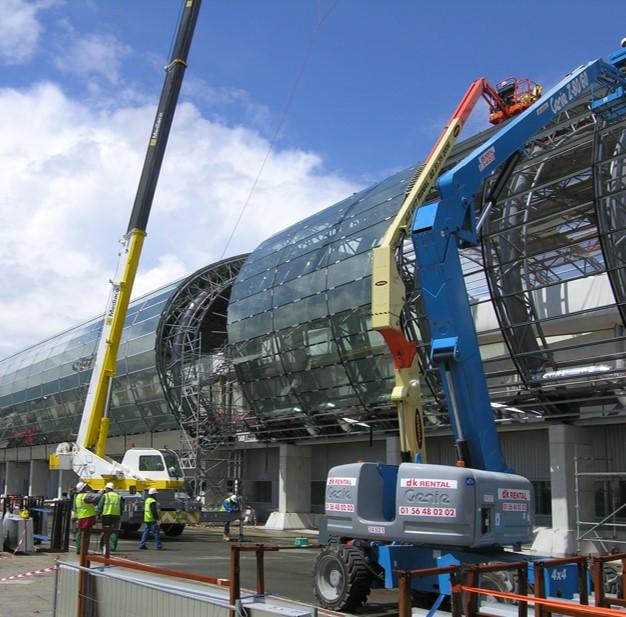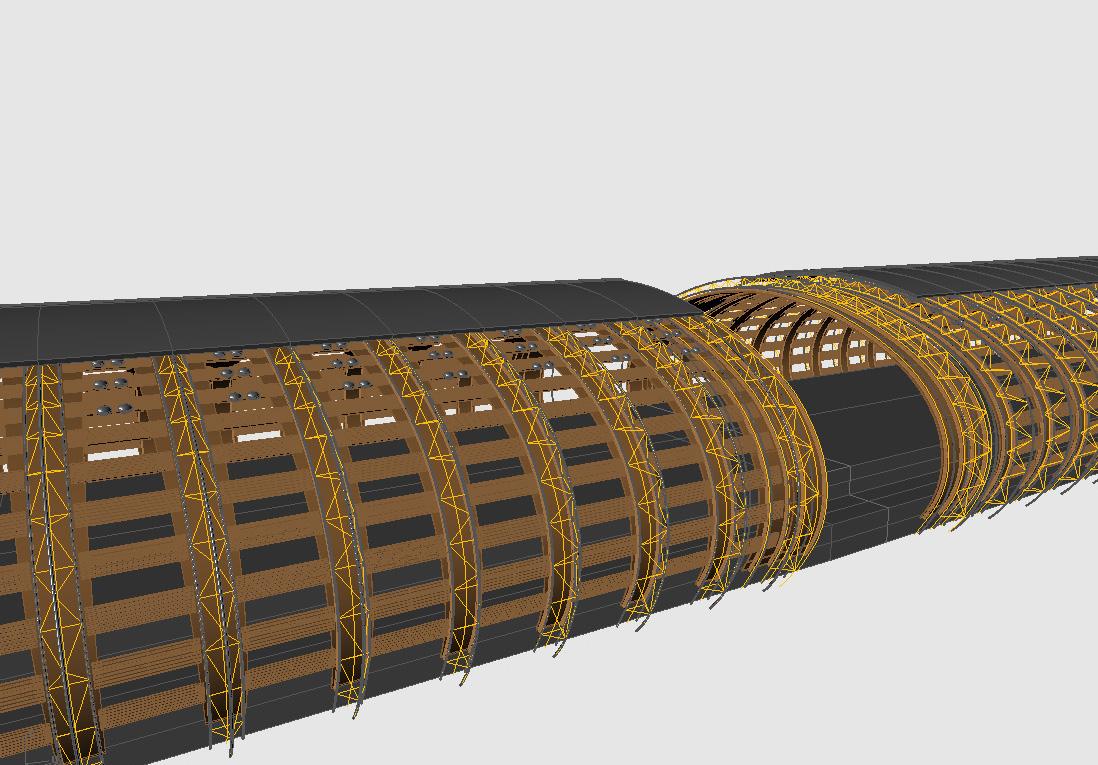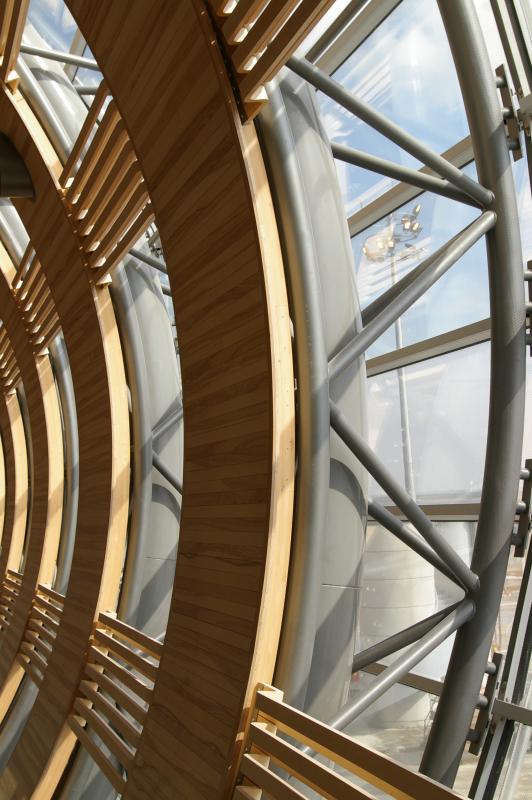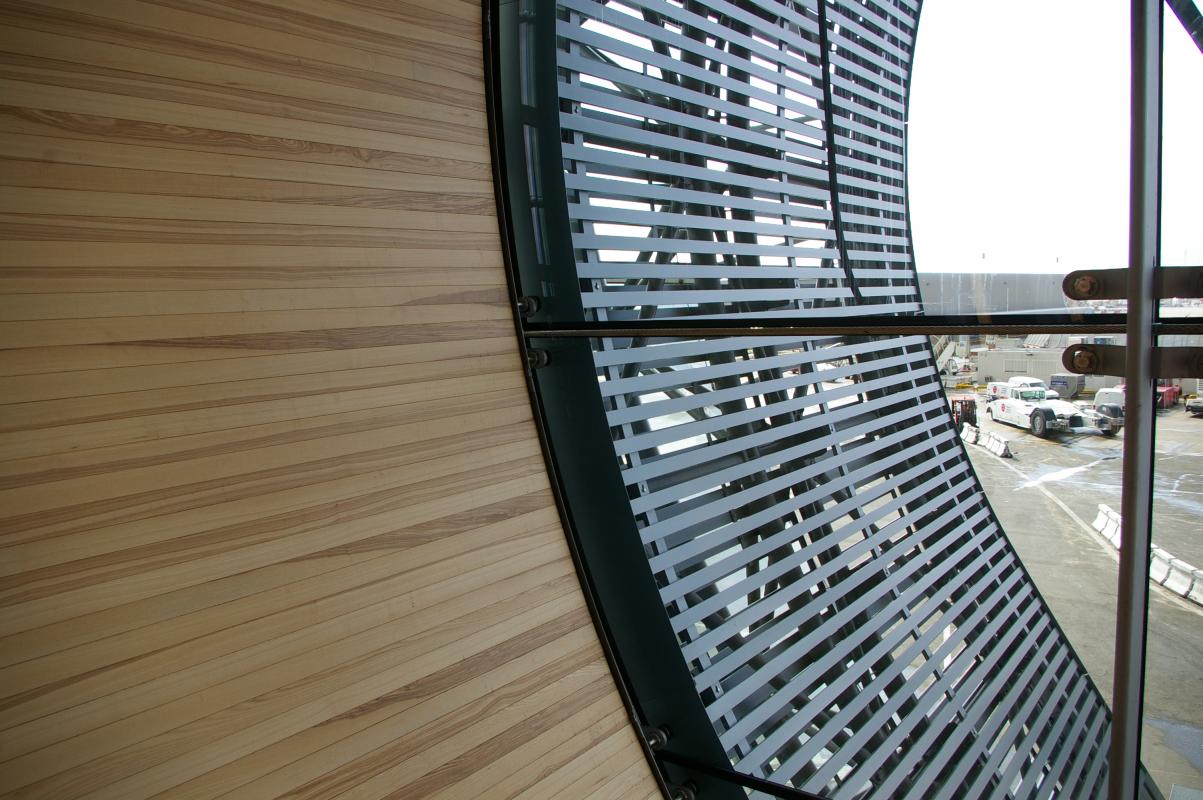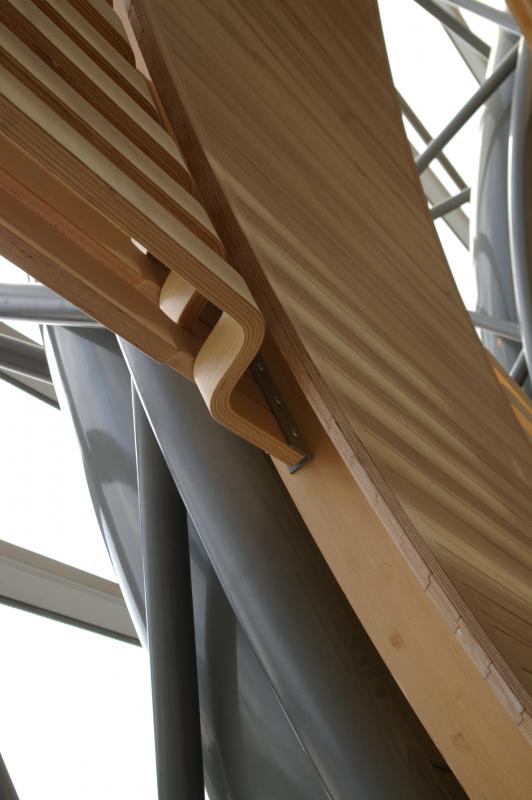Reconstruction of Terminal 2E
Reconstruction of the 2E boarding area in Paris–Charles de Gaulle airport
The "jetty" is the departures lounge of Roissy–Charles-de-Gaulle airport’s Terminal 2E, from which 14 boarding bridges access the aeroplanes. Its reconstruction, following its partial collapse in 2004, endeavoured to re-use as many elements from the original structure as possible: notably the glazing system and ventilation ducts. The geometry of the original project was also to be maintained: a gently curving tunnel, 650 m long, 30m wide and 12.5 m high. The concrete vaulting was replaced by a structure made up of 152 steel arches supporting the glazing and from which an internal timber cladding is suspended, recreating the internal space of the original project.
The arches are steel lattice girders placed at regular intervals in the 1.5 m gap between the external glazed surface and the timber vault. The layer of air warmed by the sun is extracted at the top of the glazed hall in order to maintain a comfortable internal environment.
The interior vault, a curved surface of 30,000m², is formed of prefabricated timber modules, between which are interleaved open-worked areas of bent timber slats. These capture and diffuse the light, and are left open at eye level to afford views of the runways. The decision to prefabricate the timber modules as huge pieces, assembled on site without joints, was taken in order to better manage the installation time, but also to meet the scale of this vast space. Each module is composed of curved plywood panels, fixed onto curved glulam stiffeners. The internal facing of these panels is a continuous veneer of birch strips, treated for fire-resistance. The module is suspended from the lattice girders by articulated and adjustable fixtures, invisible from the lounge, designed to absorb movements in the steel structure.
The innovative nature of these modules necessitated accelerated aging and fire-resistance testing, carried out by the French wood industries organization (FCBA). On top of this, the 160,000 birch strips, each with a different grain and shade, were carefully selected so as to obtain a homogenous interior look.

